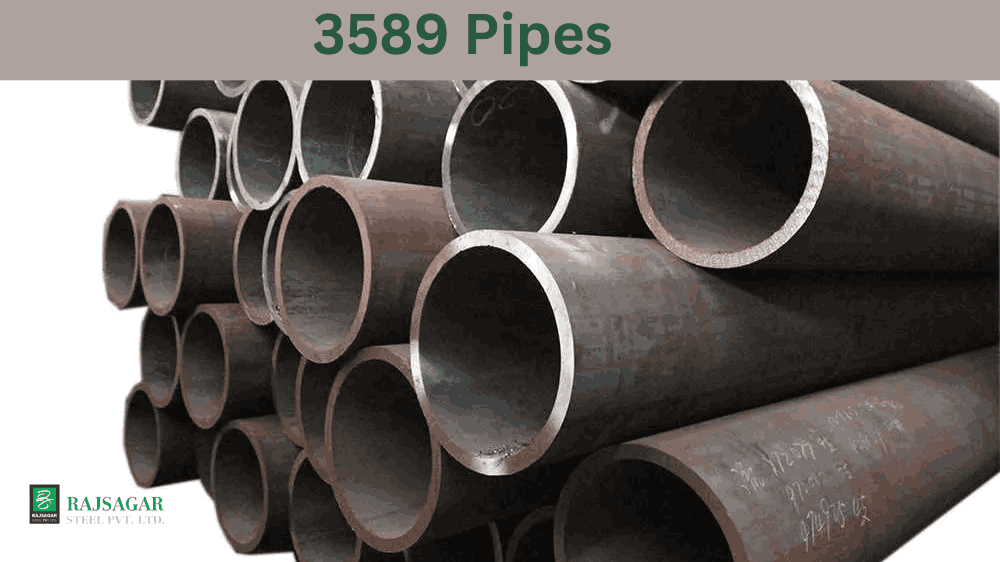Pipes are an integral part of various industries and have diverse applications. From water supply to gas transportation, pipes are used in every aspect of infrastructure development. One such type of pipe is IS 3589 pipes. These pipes are widely used in several applications, including water supply, oil refineries, irrigation schemes, etc. However, many people still don’t know much about them. So, in this blog, we will provide a comprehensive overview of IS 3589 pipes and how they differ from other pipes
What is IS 3589 Pipe?
3589 pipes is a type of industrial piping used most often in constructing and maintaining buildings, power plants, refineries and petrochemical operations. It has an outside diameter specified as part of a standard nominal pipe size (NPS). The wall thickness of 3589 pipes is based on the Inside Diameter (ID) divided by the plate thickness. This makes them suitable for extreme operating conditions, including high temperatures and pressures. Additionally, these pipes offer corrosion resistance due to their chemical composition, which includes elements such as Carbon-Manganese-Silicon or Chromium-Nickel-Molybdenum, depending on requirements. Further advantages are its lighter weight compared to other types of metal piping systems and good tensile strength that helps ensure it can withstand pressure under extreme conditions. They are also easy to work with since they can be bent or welded easily for installation purposes.
Understanding IS 3589 Pipes & Their Differences from Other Pipes
IS 3589 is an Indian Standard (IS) code that specifies the requirements for steel pipes used for water, gas, and sewage purposes. These pipes are made from carbon steel and are available in various sizes and thicknesses to cater to industrial applications. The thickness range of these pipes varies from 3.2 mm to 12.7 mm, and the length ranges from 4-7 meters. One primary advantage of IS 3589 pipes is that they are highly durable and long-lasting.
These pipes are quite different from others, such as PVC and HDPE. Firstly, IS 3589 pipes are made of steel, unlike PVC pipes, which are made of plastic. IS 3589 pipes are thus much more durable and can withstand high pressure and extreme temperatures. Furthermore, compared to HDPE pipes, IS 3589 pipes have better corrosion resistance and are more suitable for industrial purposes.
The thickness and strength of IS 3589 pipes also make them ideal for underground or buried applications. One key aspect that distinguishes IS 3589 pipes from other steel pipes is the manufacturing process. IS 3589 pipes are made using the Electric Resistance Welding (ERW) process. The steel sheets are welded longitudinally in this process by passing a high-frequency electric current through them. This ensures the pipes’ excellent mechanical properties and high strength. On the other hand, other steel pipes, like seamless pipes and welded pipes, are made using different manufacturing techniques. IS 3589 pipes come in grades Grade FE 330 and Grade FE 410. Grade FE 330 pipes are primarily used for water supply, while Grade FE 410 pipes are used in water supply, sewage pipelines, and structural applications. The chemical composition of these grades includes carbon, manganese, sulfur, phosphorus, silicon, and more. The exact composition depends on the intended application and specifications.
Conclusion:
IS 3589 pipes are essential to many industrial applications, and understanding the differences between IS 3589 pipes and other pipes is crucial. These pipes come in various grades and have unique manufacturing processes, making them highly durable and long-lasting. While PVC and HDPE pipes have advantages, IS 3589 pipes are more suitable for industrial, underground, and high-pressure/high-temperature applications. By knowing about the types of pipes and their features, individuals can make informed decisions and choose the appropriate pipe type for their specific needs.

